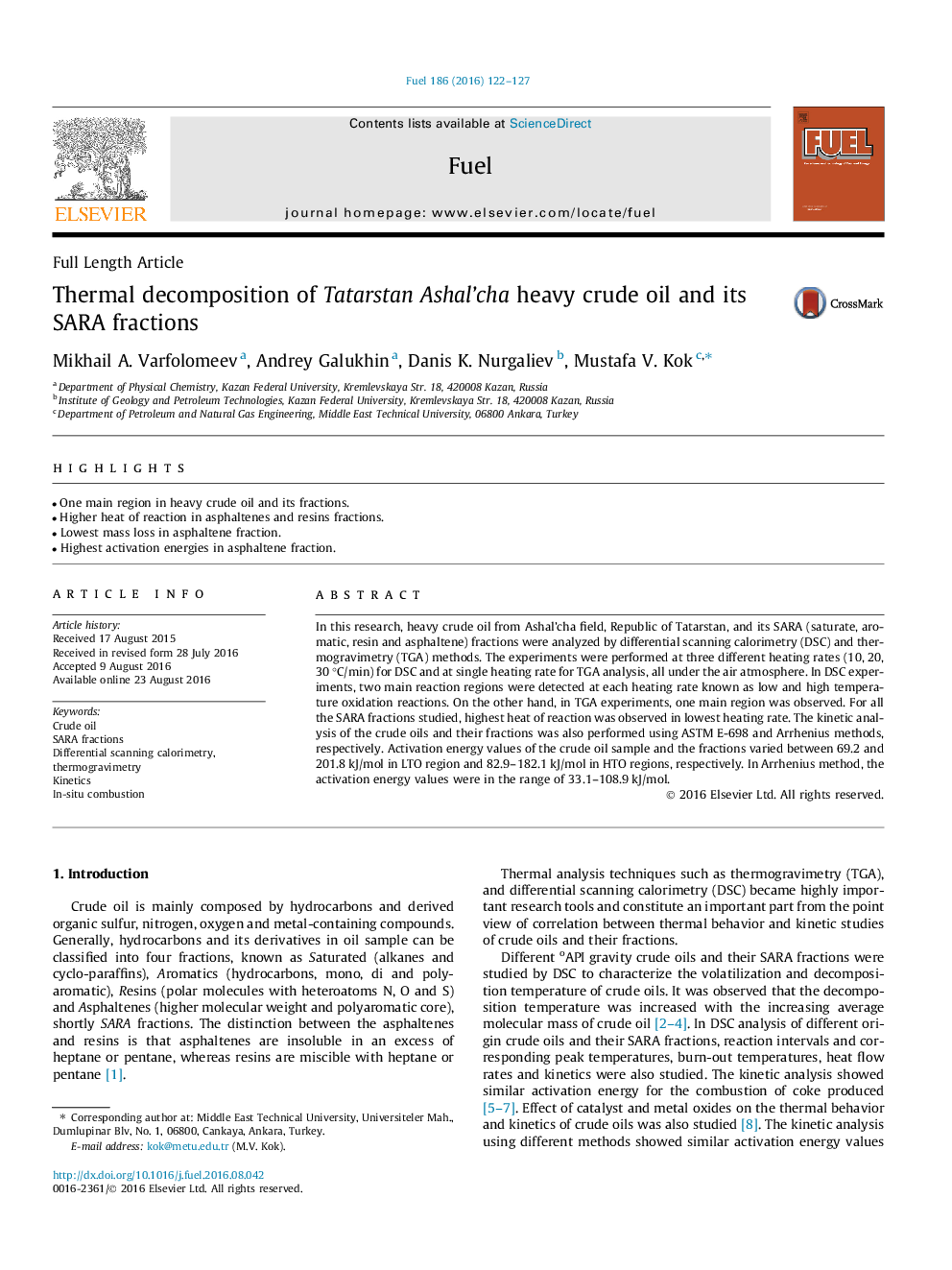| Article ID | Journal | Published Year | Pages | File Type |
|---|---|---|---|---|
| 6476017 | Fuel | 2016 | 6 Pages |
â¢One main region in heavy crude oil and its fractions.â¢Higher heat of reaction in asphaltenes and resins fractions.â¢Lowest mass loss in asphaltene fraction.â¢Highest activation energies in asphaltene fraction.
In this research, heavy crude oil from Ashal'cha field, Republic of Tatarstan, and its SARA (saturate, aromatic, resin and asphaltene) fractions were analyzed by differential scanning calorimetry (DSC) and thermogravimetry (TGA) methods. The experiments were performed at three different heating rates (10, 20, 30 °C/min) for DSC and at single heating rate for TGA analysis, all under the air atmosphere. In DSC experiments, two main reaction regions were detected at each heating rate known as low and high temperature oxidation reactions. On the other hand, in TGA experiments, one main region was observed. For all the SARA fractions studied, highest heat of reaction was observed in lowest heating rate. The kinetic analysis of the crude oils and their fractions was also performed using ASTM E-698 and Arrhenius methods, respectively. Activation energy values of the crude oil sample and the fractions varied between 69.2 and 201.8 kJ/mol in LTO region and 82.9-182.1 kJ/mol in HTO regions, respectively. In Arrhenius method, the activation energy values were in the range of 33.1-108.9 kJ/mol.
